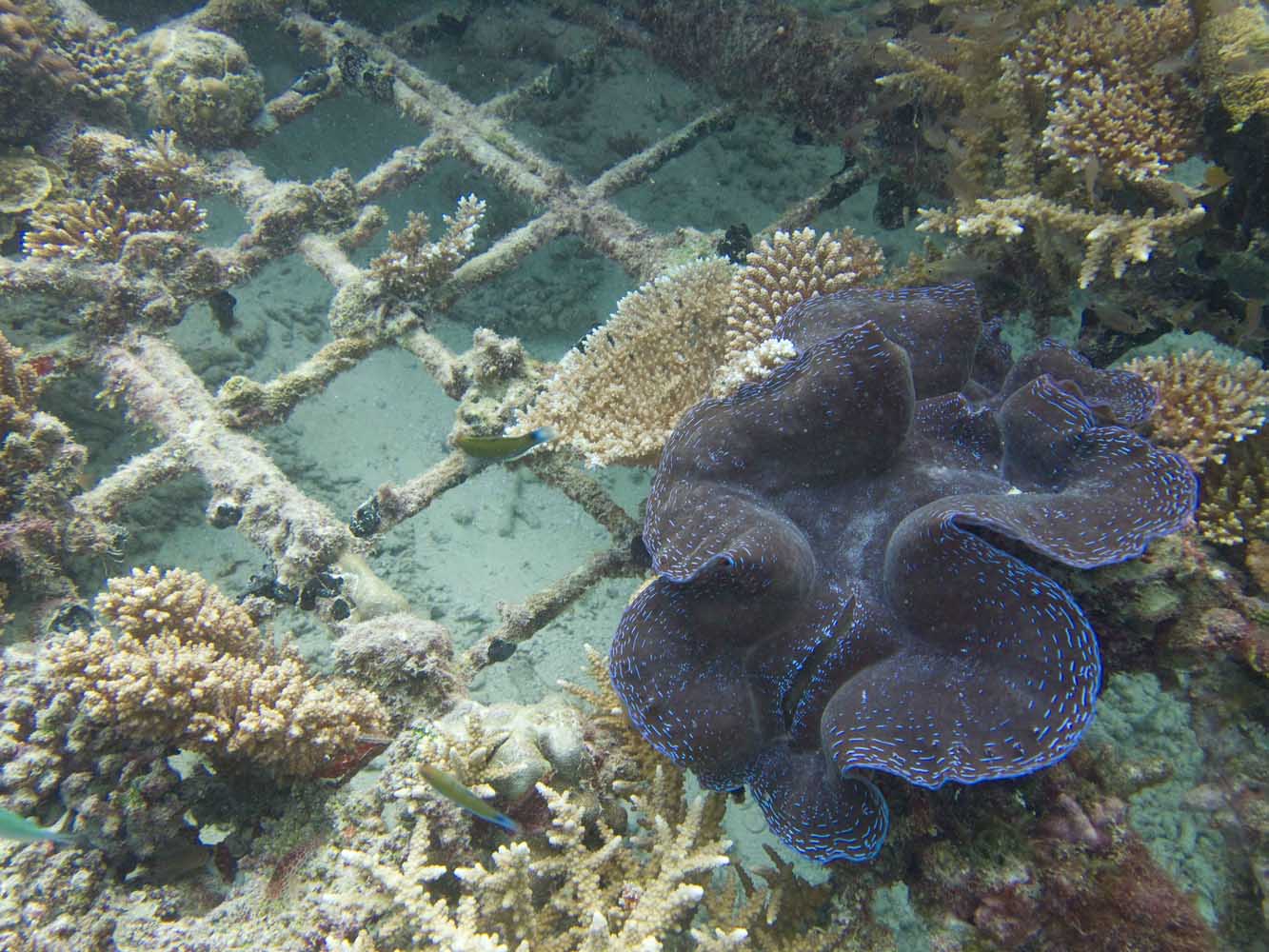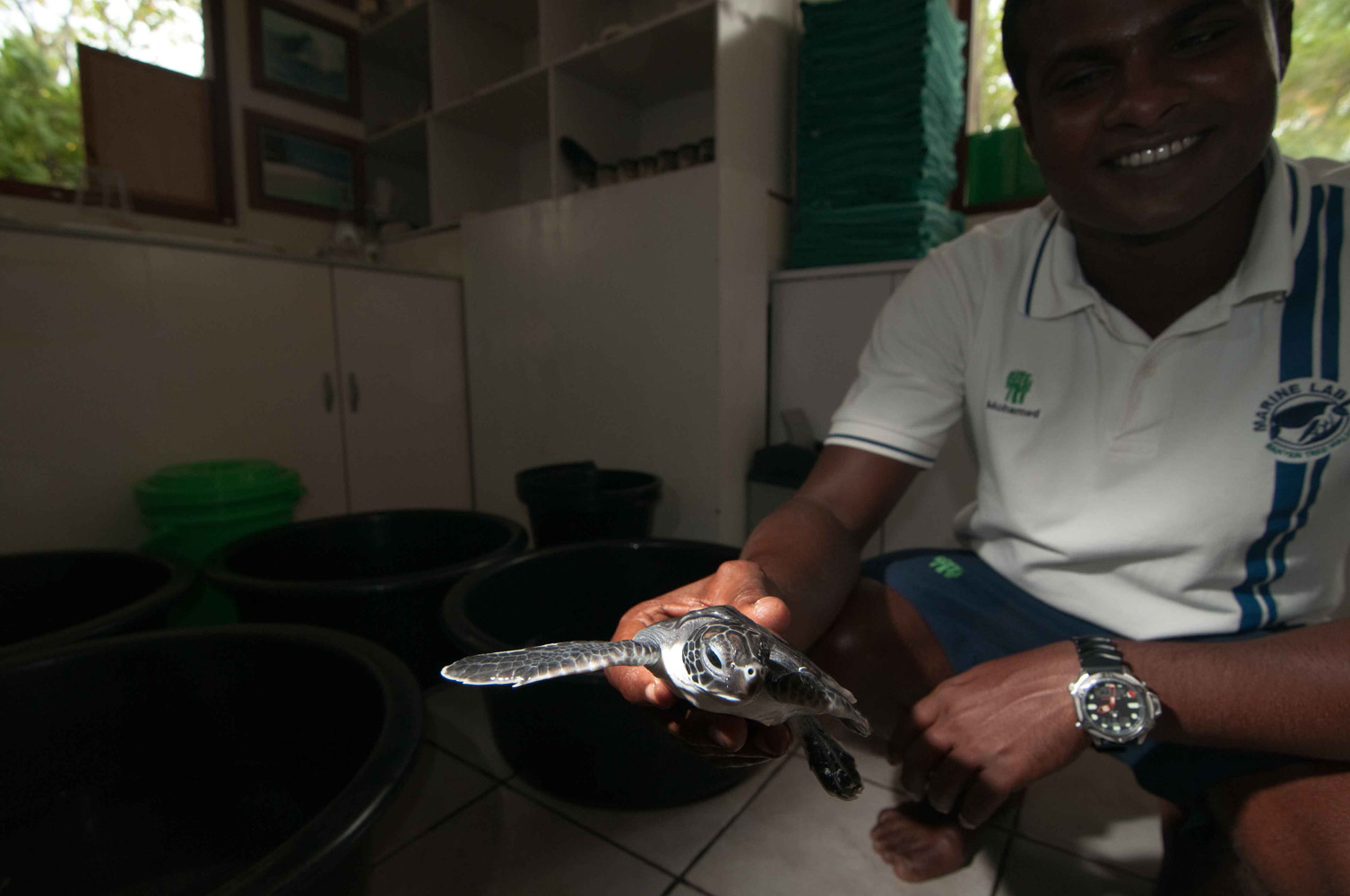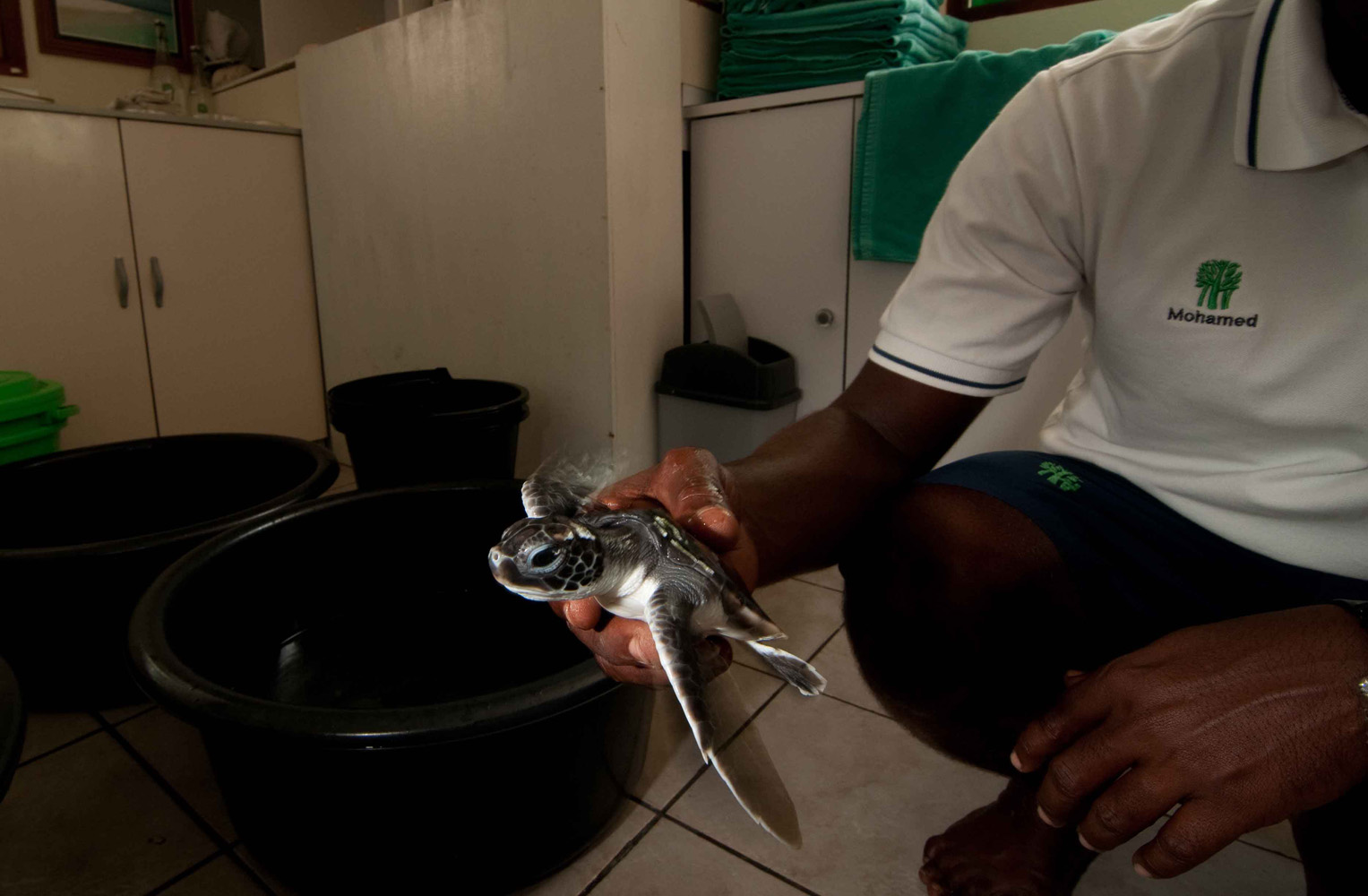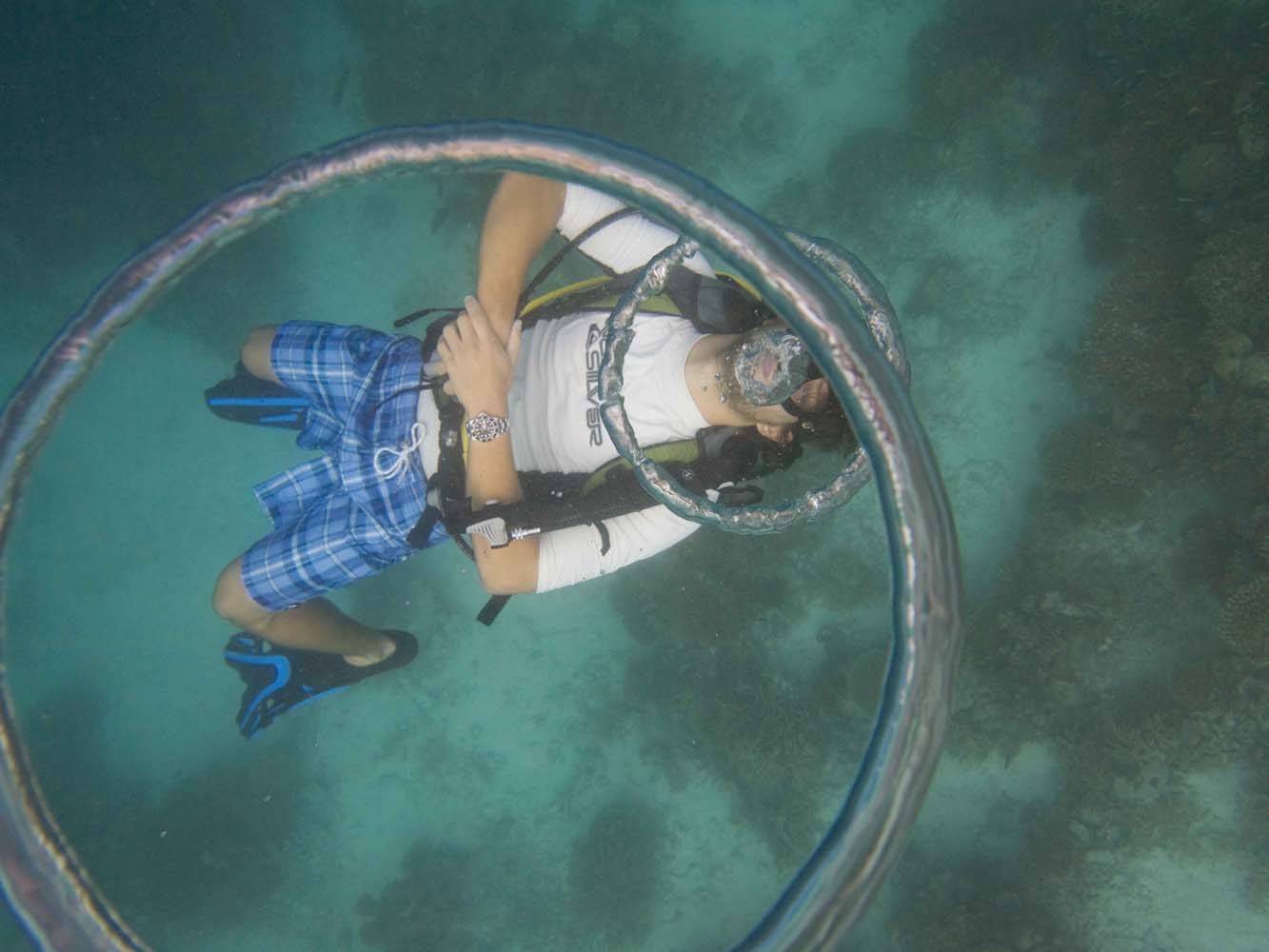I’ve finished my stay at Hanifaru, but I’ve left full of excitement and with future plans full of manta rays. Unfortunately the last ten days have been heavy with storms and light on the mantas, but uneventful days on a boat spark thoughtful discussions and novel ideas (and more than the occasional game of backgammon), so the time was far from wasted.
Before heading on to Australia I’m spending four days at the Banyan Tree resorts in North Male Atoll. The Banyan Tree company is dedicated to conservation and helping to ensure a healthy future for the environment, so at many of their resorts they fund a marine lab to do research in the area and to educate guests about the local marine environment that they’re often interacting with during their stay. The Banyan Tree Resort on Vabbinfaru conducts research on both Vabbinfaru and the sister resort’s island of Ihuru, only about 500 meters away. The house reefs surrounding these two islands are absolutely extraordinary, with much of the reef crest boasting 100% coral cover, and tons of large predators including a number of black tip reef sharks. These spectacular reefs have provided a number of opportunities for the marine lab to research coral resilience in the face of rising water temperatures – especially after a massive bleaching event in 1998 and a more minor bleaching just a few years ago. Thanks in part to a healthy reef fish population, most of the corals on these two reefs survived the bleaching, but some areas that did not recover to their previous state have provided the lab with an opportunity to test the viability of electrified artificial structures in promoting reef growth. The structures appear to be successful and a whole host of different species are recruiting on the artificial substrate, along with numerous adult colonies that have grown steadily over the years.
Another of the initiatives at the Vabbinfaru marine lab is a captive turtle breeding program. The Maldives is famous for its hawksbill and green turtles, but unfortunately they are in danger from poaching by local fishermen. Turtle eggs are highly coveted and adult turtle meat is a delicacy here. In order to encourage higher survival rates among juvenile sea turtles, biologists from the marine lab collect hatchlings from the wild – only those that have been trapped in the nest after the initial rush of hatchlings have made it out – and raise them in the lab and in a cage in the island’s lagoon. They’re kept for two years, until they’re large enough that the majority of their predators can no longer feed on them, and then released into the wild with a satellite tag and a titanium tag indicating that they were raised in captivity. The satellite tags detach after six months, and so far they have indicated almost 100% survival rate among released juveniles.
It’s encouraging to see a resort doing so much past what’s required by the government in an effort to benefit the local marine environment.







